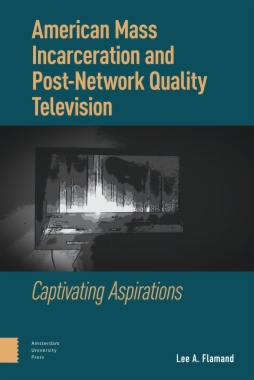Far more than a building of brick and mortar, the prison relies upon gruesome stories circulated as commercial media to legitimize its institutional reproduction. Perhaps no medium has done more in recent years to both produce and intervene in such stories than television.
This unapologetically interdisciplinary work presents a series of investigations into some of the most influential and innovative treatments of American mass incarceration to hit our screens in recent decades. Looking beyond celebratory accolades, Lee A. Flamand argues that we cannot understand the eagerness of influential programs such as OZ, The Wire, Orange Is the New Black, 13th, and Queen Sugar to integrate the sensibilities of prison ethnography, urban sociology, identity politics activism, and even Black feminist theory into their narrative structures without understanding how such critical postures relate to the cultural aspirations and commercial goals of a quickly evolving TV industry and the most deeply ingrained continuities of American storytelling practices.
- Cover
- Table of Contents
- The Captivating Aspirations of Post-Network Quality Television in the Age of Mass Incarceration: An Introduction
- Remediating Mass Incarceration
- The Political Economy of Post-Network Television
- Our Scheduled Programming
- 1. Mass (Mediating) Incarceration
- Captivity by the Numbers
- Invisible Punishments & Revolving Doors
- Socialized Precarity & Captive Profits
- Punitive Realism & Unruly Spectacles
- Conclusion
- 2. How Does Violent Spectacle Appear as TV Realism? Sources of OZ’s Penal Imaginary
- Welcome to OZ
- What is TV Realism?
- The Prison as Hyper-Real Institution
- Looks Like America? Populating the Prison Nation
- Haunting Repetitions: Plotting the Prison’s Archive
- Bizarre Realism
- Conclusion
- 3. If It’s Not TV, is It Sociology? The Wire
- A Surprising Debate
- Procedural Anxieties
- What is Sociology?
- Tele-visualizing the Surveillance Society
- Soft Eyes and the Sociological Imaginary
- Sociological Ambitions: Reform, Critique, Utopia
- Reassembling Mass Incarceration
- The Cultural Contradictions of Sociological Aspirations
- Conclusion
- 4. Is Entertainment the New Activism? Orange Is the New Black, Women’s Imprisonment, and the Taste for Prisons
- We’re Not in OZ Anymore
- Scripting Prison Practices
- Foregrounding Backstories through the Penological Carousel
- Celebrity and the Politics of Trans-Televisibility
- Articulating Communities of Concern
- Finding Oneself There: Inmate Receptions
- Feedback Loops, Recommendation Engines, and the Taste for Prisons
- Conclusion
- 5. Can Melodrama Redeem American History? Ava DuVernay’s 13th and Queen Sugar
- Publicizing Ava DuVernay as Black Feminist Auteur
- “The Story Never Changes”?
- History: Assembly Required
- Homecomings: Melodrama and the State of Innocence
- The Black Family in American History
- Black Family Melodrama in the Age of Mass Incarceration
- The Possibilities and Perils of Popularizing Radical Epistemologies
- Conclusion
- Conclusion: American Politics and Prison Reform after TV’s Digital Turn
- Bibliography
- Acknowledgements
- Index

